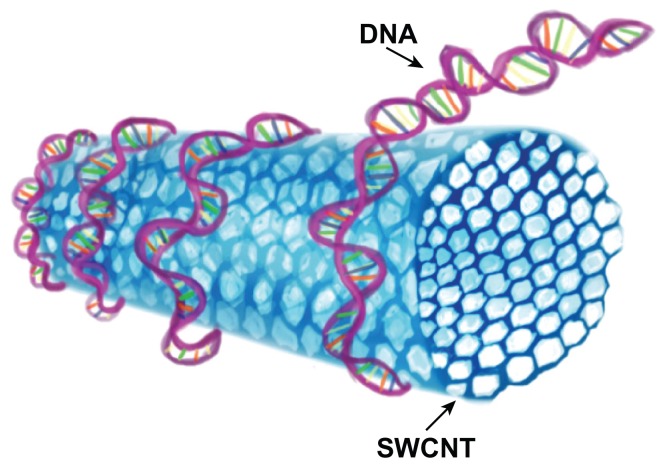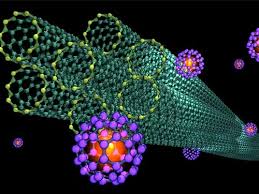Biomolecule Dissociation Materials in the DNA of SWCNTs Nanotubes (Based on Nano-Microelectronics PhD) (PhD-Research)
Researcher and author: PhD student : Afshin Rashid)
Note: Many biomolecules have the potential to differentiate between specific DNA types of different nanotubes. The diameter-dependent selective dispersion of SWCNTs is obtained by Chitosan polymer and PEG oligomer polymer by twisting adsorption.
The complexity of the spiral (Falun mono-nucleotide) on nanotubes is very interesting. It can selectively isolate nanotubes (6,8) up to 85% from a wide diameter diameter nanotube sample. DNA has been extensively used to isolate a particular type of nanotube through non-coil twisting . Using single-stranded DNA, the nanotubes can be dispersed in solution , and how the DNA twists selectively depends on the specific sequence of the DNA strand. You through the layers of oligo nucleotide (GT (Poly orderly structure SWCNTs very high on the turns and cause separation of nanotubes, metal / semiconductor -based electrical properties of the nanotube diameter is. After the interaction between the DNA and nanotubes it'll be done. The DNA separation method is used to disperse the nanotubes. During which the nanotubes (5,6) were enriched from the nanotubes (3,10) . The enrichment of metal nanotubes increases with the decrease in DNA length. One method of purifying single-stranded nanotubes using DNA twisting coupled to size- and size- dependent chromatography of DNA separates a particular type of nanotube from the mixture , further refining the original semiconductor species with chromatography. The unique chirality is separated from a high purity synthetic nanotube blend . That the structural order of the SWCNT-DNA hybrid induces structure recognition SWCNTs approximate the theory that the purine-pyrimidine pattern has been identified as a sequence pattern that can form a hydrogen bond to form a two-dimensional plate and can selectively form a nanoparticle on a nanowire. Pipes to be wrapped. Separate (5,10) nanotubes (TTT3) have been sequenced using DNA with T sequences that are highly efficient for use in FET equipment.
Octadecylamine selectively interacts with semiconductor SWCNTs , provided that SWCNTs are oxidized. On the contrary, the use of propyl amines Vayzv propyl amines in THF, selective adsorption on metallic SWNTs do it. This results in the solubilization of the metal nanotubes. Different colors of the nanotube suspensions are observed indicating high purity of the specific type of SWCNTs. Amines can also bind to SWCNTs via covalent bonding , but there is no selectivity for metallic or semiconductor SWCNTs .
Conclusion :
We conclude that different surfactants have been used to classify SWCNTs by chirality . Selective separation of SWCNTs is performed using the added salt SDS solution . The diameter and chirality- dependent binding of the general surfactants (sodium sulfate 10), (sodium dodecyl benzene 11) sulfonate, and (sodium quaternary 12) in aqueous solution.
Author: Engineer Afshin Rashid
PhD student of Nano-Microelectronics at Islamic Azad University, Science and Research Branch, Tehran




